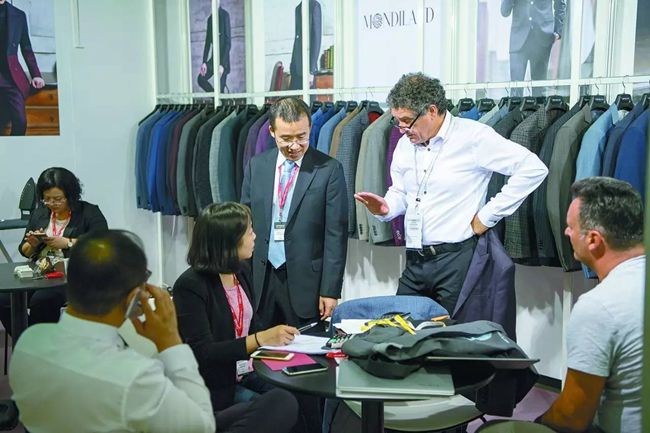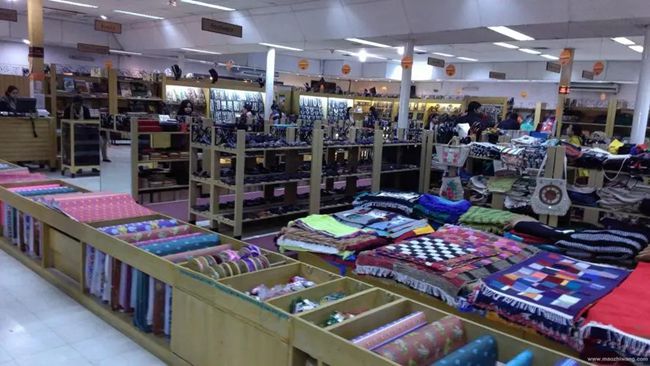"China Textile Federation data shows that in 2022 the national textile and garment industry's e-commerce B2B transactions amounted to about 6 trillion yuan, and clothing and home textile online retail sales exceeded 2 trillion yuan, both maintaining steady growth." At the recently held 2023 Guangxi-ASEAN International Textile and Garment Industry Expo cross-border e-commerce summit and procurement selection matchmaking meeting, Xu Jianhua, vice president of the China Textile Industry Enterprise Management Association, said that in terms of going to sea, cross-border e-commerce has become an effective path for enterprises and brands to reduce intermediate links, save transaction costs, achieve rapid response and even create brands and enhance brand awareness.
As the textile and garment industry continues to make new progress through e-commerce at home, more and more textile and garment enterprises and brands are beginning to "go global" through cross-border e-commerce, looking for more opportunities while exploring larger markets. It is understood that the United States, the European Union, ASEAN and Japan are the main markets for China's garment exports, but in fact there are more international markets waiting to be further explored.

Dou Hua, sales manager of Speedy Africa Logistics (Shenzhen) Co Ltd, said that clothing is a big business in Africa, and the African market is a new blue ocean for cross-border e-commerce development. He introduced the rapid development of e-commerce in Africa in recent years. According to StockApps.com, Africa's e-commerce market revenue reached US$28 billion in 2021, with revenue expected to be US$33.3 billion in 2022 and may reach US$42.3 billion by 2024. Compared to US$7.7 billion in 2017, the industry market size is set to grow by approximately 500% in seven years. The African apparel market is currently transforming from traditional to digital trade, but lacks influential local brands. The Chinese apparel industry can seek market opportunities in Africa through cross-border e-commerce channels, providing a larger, richer and more diversified product selection for the region.
He Jiahuan is the Head of Commercial and Regional Development for Mercado South China, and in her view, Latin America also has a large market potential. She said that Latin America not only has a demographic dividend, but also has a high proportion of online shoppers, making it one of the fastest-growing e-commerce markets in the world. At present, the Latin American consumer market is generally under development, buyers have fewer brands to choose from, are offered a narrow price range, and relatively few Chinese brands have entered the local market, so the Latin American market can become a new choice for quality Chinese clothing brands with good product quality, good prices and strong customer service capabilities.
There are also challenges behind the opportunities. Huang Cui, regional land transport director of Polar Rabbit International in Guangxi, said that order fragmentation, higher transport costs, higher local labour costs, stagnant overseas warehousing stocks and increased trade friction have all brought challenges to the garment industry going abroad. In particular, garment companies are prone to "stepping on the toes" in the field of cross-border logistics, such as not meeting the timeframe and having no recourse; not knowing where to locate the goods while they are in transit; having no way to claim compensation for damage or loss of goods; having no warehouse for returned goods, piling up of tail goods, language barriers and low efficiency. To solve these problems, Polar Rabbit International Logistics is helping garment industry brands to go abroad efficiently by realizing digitalization, integration, customization and stability services.

It is worth mentioning that Guangxi, where this cross-border e-commerce summit is held, is located in the core corridor of the China-ASEAN Free Trade Zone, with five Yizhou District and Huanjiang County in Hechi (China's high-quality cocoon and silk production base), Fumian District in Yulin (China's famous leisure garment city), Mule Town in Guiping City in Guigang (China's famous leisure sports garment town), and Gangnan District in Guigang (China's hometown of down) National-level textile and garment industry bases, along with the continuous development of the new local digital foreign trade, its location advantages, industrial advantages and market advantages have been further released.
Xu Jianhua said, China's textile and garment industry is further moving to Southeast Asian countries and China's central and western regions, Guangdong, Fujian, Jiangsu, Zhejiang and other areas of textile and garment enterprises to increase investment and construction in Guangxi, a large number of textile and garment goods through Guangxi to achieve interconnection with ASEAN, RCEP member countries, contains a huge business opportunities.
In this regard, in order to help Guangxi's high-quality industries to access the world, Alibaba International Station continues to carry out local e-commerce training and talent cultivation activities in Guangxi. Chen Wenkun, General Manager of Alibaba International Station Yungui Region, said that Alibaba International Station Yungui Region will take the Guangxi-ASEAN International Textile and Garment Industry Expo as an opportunity to carry out B-side specific local service system and benchmarking tours, and through the organic combination of online and offline, help Guangxi businesses, including the garment industry, to transform and upgrade their digitalization to the sea, and help more excellent local enterprises to go abroad and We will help more excellent local enterprises to go abroad and gain customers on the whole network.

